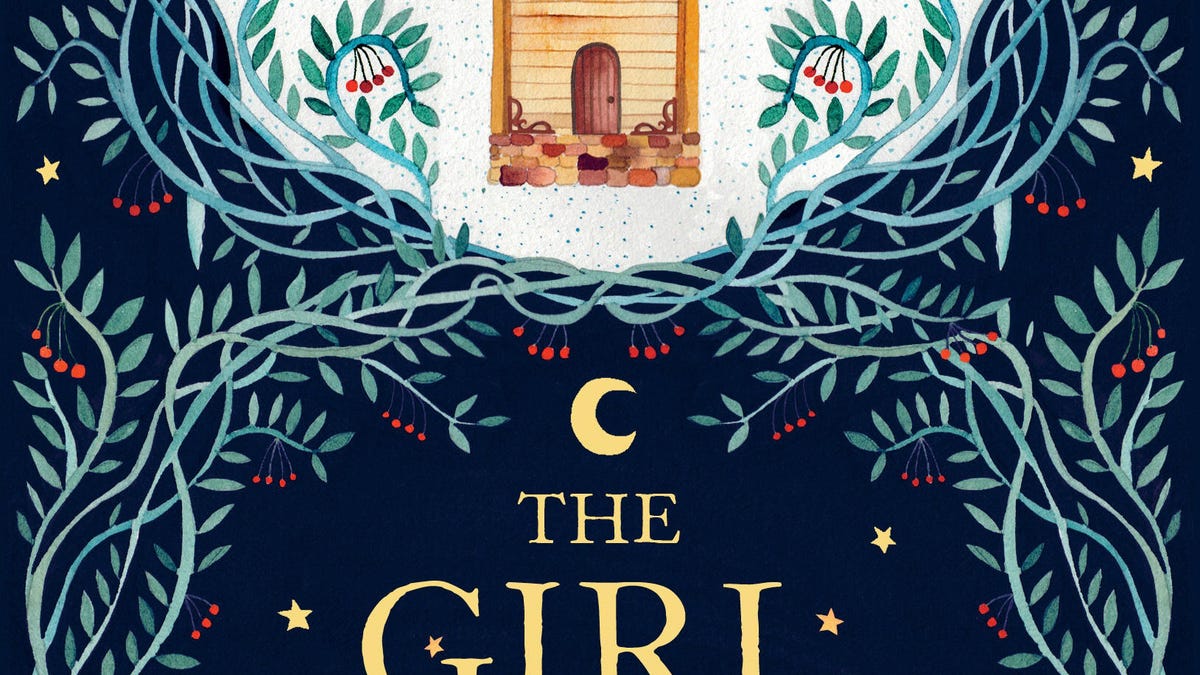Enchanting 'The Girl in the Tower' mixes feminism, frost-demons
Review: Katherine Arden's sequel to "The Bear and the Nightingale" is a captivating fantasy filled with spirits, intrigue and a longing for escape.

After the critical success of 2017's "The Bear and the Nightingale," Katherine Arden of Austin, Texas, is back again with another elegantly crafted world that melds folklore and fantasy, with a splash of historical fiction for good measure.
"The Girl in the Tower," the second installment of her Winternight trilogy, begins where "The Bear and the Nightingale" left off.
Set in medieval Russia, the story stars Vasilisa Petrovna (Vasya), who's on the run after having been accused of witchcraft following the violent deaths of her father and stepmother.
Finding brief refuge in the fir grove home of one Morozko, a morally ambiguous frost-demon, Vasya soon aches for adventure. Leaving the safety of the forest she begins her new life as a traveler, exploring Russia far beyond the boundaries of her childhood home.
Understanding the dangers of journeying alone as a woman, Vasya disguises herself as a man as she rides through the freezing countryside of ancient Rus' (the word Russia didn't come into common use till the 17th century).
On discovering a series of villages, each burned to ashes, with their young girls kidnapped, Vasya determines to free the girls and stop the bandits. But a chance encounter after a bloody confrontation sees her welcomed into the court of the Grand Prince of Moscow.
However, it soon emerges that the city itself is under threat from something far more sinister than a band of opportunist rogues, and Vasya may be the only person who can protect the town and its people.
Returning friends and foes
From the outset, Arden's research and understanding of 14th-century Russia is lovingly woven into "The Girl in the Tower." She blends historical characters and established folktales into the fantasy setting of her own fictional world with apparent ease. Vasya and her brother, for example, seem as much a part of Russian history as the Grand Prince Dmitry or the Golden Horde.
Indeed, Arden spends much of her time further developing characters we thought we already knew in "The Bear and the Nightingale," while introducing new historical entities.
Katherine Arden
For instance, we witness the development of Vasya's wisdom and strength as she's given the space to grow and mature into adolescence. She eventually becomes more resilient, judicious and in tune with her own powers and magical capabilities.
At the same time, Morozko (the frost-demon) loses a certain maturity; he's often capricious and occasionally petulant. Meanwhile Olga, Vasya's sister, weakens in both spirit and flesh. She capitulates to the expectations of her gender and station, making her a realist counterpoint to Vasya, who holds an almost unshakable idealistic outlook throughout.
Gender plays a prominent role throughout the book. Vasya pushes against the conventions of her time with just enough weight to make for a compelling inversion of expectations, without being anachronistic or didactic in tone. It's always gratifying to see our young heroine question and fight back against the arbitrary male enforced rules of the Middle Ages, with the courage of her own convictions and sense of justice.
There are fewer demons and house spirits this time around, and that's one of my main disappointments with the book. Vasya's conversations and encounters with Domovois (small bearded monsters that live in the oven and protect the house), along with other peculiar creatures, were a large part of the charm of Arden's debut. Their understated presence offered an almost magical-realist sparkle to the narrative that, I hope, regains its prominence in the final book.
Winter's tale
Similar to her protagonist's spirit and temperament, Arden's style and voice carries with it a particular ineffable magic, first revealed in "The Bear and the Nightingale." Her prose is pleasingly paced and often intensely evocative.
Right from the book's opening chapter Arden will deftly transport you to an alternate, forgotten Russia in the heart of winter. So vivid was her writing, the freezing forests and snow covered landscapes had me searching for a cozy nook every time I sat down to read.
Rarely does Arden present us with abstruse or unnecessary narrative detours. Instead, we're treated to a mix of clarity and lyrical curlicues of thought, which the author can summon at will, manifested either in the words themselves or Arden's depth of research.
For example, both books in the trilogy suggest (among other things) a great knowledge of medieval chivalric romance. This quietly sits below the surface, providing a firm bedrock on which the author has built her own world.
What is Vasya's horse, Solovey, if not a reimagined Gringolet? And who could deny the echoes of Gawain's girdle in Vasya's magical pendant?
And that's why the book is such a captivating work of fantasy: It offers a successful blend of familiarity with a new and exciting story. Arden's evocative prose, depicting an ancient, frozen Russia infused with hints of magic, makes for great escapism and the perfect winter read.
The novel works well as a standalone, but my suggestion is to start with "The Bear and the Nightingale" to get the most out of the second part of this trilogy. You won't regret it.
You can buy "The Girl in the Tower", published by Del Rey Books, for £8 on Jan. 25. If you're in the US or Australia, you can grab a copy now for $11 or AU$12, respectively.
The Winternight trilogy concludes with "The Winter of the Witch," which is set for release later this year.
Be sure to read my interview with the author, in which we talk about fairy tales, ancient Russia and her approach to writing fantasy.
Technically Literate: Original works of short fiction with unique perspectives on tech, exclusively on CNET.
Crowd Control: A crowdsourced science fiction novel written by CNET readers.

